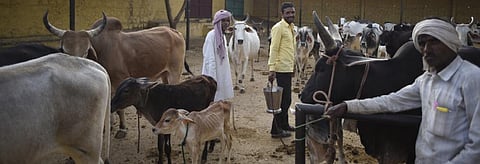

The gap between high-, middle- and low-income countries on the per capita consumption of animal protein (meat, fish, dairy, eggs) in the next decade is expected to increase, according to a new report.
Per capita availability of animal protein in high-income countries is expected to grow slowly over the coming decade (1.8 grams per person per day, or three per cent), according to the report. More people in these countries will replace red meat with poultry meat or dairy products due to health and environmental reasons.
Titled OECD-FAO Agricultural Outlook 2021-2030, the report is a collaborative effort of the Organization for Economic Co-operation and Development and the UN Food and Agriculture Organization (FAO).
The demand for beef is already declining in the developed world. According to the report, most countries and regions like Canada, Australia and the European Union, with high per capita consumption of beef, will see these levels declining.
Per capita consumption of pig meat in the European Union and of both pig meat and sheep meat in Australia, are also projected to decline, as consumers switch to cheaper and healthier alternatives, mostly poultry.
Moreover, the increase in poultry meat availability in these countries will lead to it accounting for over half of the available additional animal protein over the coming decade, the report said.
Widening gap
In middle-income countries, per capita availability of animal protein is projected to increase by 11 per cent.
Low-income countries will have low per capita availability of animal protein, averaging 13.8 grams per person per day in 2018-20. Over the coming decade, these levels are not expected to increase significantly (0.2 grams per person per day), the report said.
This stagnation is largely due to slow income growth following the novel coronavirus disease (COVID-19) pandemic and also supply chain disruptions in some areas.
In sub-Saharan Africa, the availability of animal protein is even projected to slightly decline over the coming decade, to 10.6 g/person/day in 2030.
Per capita availability of animal protein in selected middle and low-income countries/regions
The largest decline is expected for fish, as population growth is projected to outpace the expansion in fish supply.
These developments will contribute to widen the gap in animal protein consumption between low-income countries and middle and high-income countries over the coming decade.
This gap is projected to increase by three per cent to 48 grams per person per day between low and high-income countries and by 17 per cent to 18.5 grams per person per day between low and middle-income countries.
But the projections suggest that the gap in animal protein consumption between high and middle-income countries will decline by four per cent, to 30 grams per person per day in 2030, the report said.
Switching from beef to alternative proteins could save millions of lives and dramatically slash greenhouse gas emissions, the World Economic Forum has said. According to the report, ensuring food security and healthy diets for a growing global population will remain a challenge.